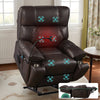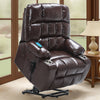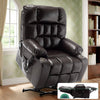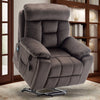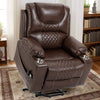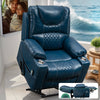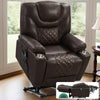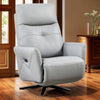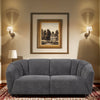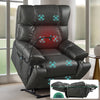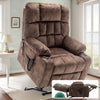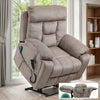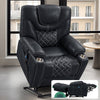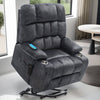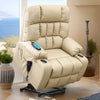Introduction to Electric Recliner Troubleshooting
Understanding Your Electric Recliner
Electric recliners are popular big reclining chairs that offer comfort and ease of use. They use motors and mechanisms to adjust positions. These chairs have various parts like the power supply, control panel, and actuators. Understanding these components helps in troubleshooting. The power supply provides electricity to the chair. The control panel lets you adjust settings. Actuators move different parts of the chair. Knowing how these work together is key to solving issues. It's also helpful to have your chair's manual handy for reference.

Common Issues with Electric Recliners
Electric recliners can face several problems. One common issue is the chair not moving at all. This could be due to power problems or motor failure. Another issue is the chair moving only in one direction. This might be caused by a faulty switch or actuator. Sometimes, the chair makes strange noises while moving. This could indicate worn-out parts or loose components. Slow movement is another frequent complaint. It may be due to weak motors or low power. Understanding these issues helps in quicker problem-solving.
Step-by-Step Troubleshooting Process
Diagnosing the Problem
Start by identifying the specific issue with your electric recliner. Is it not moving at all? Moving only partially? Making unusual noises? Once you've pinpointed the problem, check the basics. Ensure the chair is plugged in and the outlet works. Look for any visible damage to the power cord. Check if the batteries in the remote control need replacement. If these basic checks don't solve the issue, move on to more detailed troubleshooting. Keep a record of what you've tried. This will be helpful if you need professional help later.

Detailed Troubleshooting for Common Issues
- Chair not moving:
- Check the power source and connections
- Inspect the fuse in the transformer
- Test the hand control for responsiveness
- Partial movement:
- Check for obstructions in the mechanism
- Inspect cables for damage or disconnection
- Test individual motors if possible
- Unusual noises:
- Tighten any loose screws or bolts
- Check for worn-out or damaged parts
- Lubricate moving parts if needed
- Slow movement:
- Clean and lubricate the mechanism
- Check the power supply for proper voltage
- Inspect motors for signs of wear
When to Contact a Professional
If basic troubleshooting doesn't solve the problem, it's time to call a professional. Signs that you need expert help include:
- Electrical issues beyond simple power connection problems
- Mechanical failures that you can't safely fix
- Persistent strange noises or movements
- Any signs of motor burnout or electrical burning smell
Trying to fix complex issues without proper knowledge can be dangerous. It might also void your warranty. Keep your warranty information handy. Contact the manufacturer or a certified technician for assistance.
Resetting and Maintaining Your Electric Recliner
The Reset Button: A Closer Look
Many electric recliners have a reset button. This button can solve various issues. The reset button is usually located near the power cord or under the chair. To use it:

- Unplug the chair for 5 minutes
- Plug it back in
- Press and hold the reset button for 3-5 seconds
This process can reset the chair's electronic systems. It often solves minor glitches and programming issues. If your chair doesn't have a reset button, consult the manual for alternative reset methods.
Regular Maintenance Tips
Regular maintenance can prevent many issues:
- Clean your recliner regularly
- Vacuum around moving parts to remove dust and debris
- Check and tighten screws and bolts monthly
- Lubricate moving parts as recommended by the manufacturer
- Inspect the power cord and connections regularly
- Keep the recliner away from heat sources and direct sunlight
- Avoid overloading the chair beyond its weight capacity
Following these tips can extend your recliner's life and prevent common problems.
Troubleshooting After Reset
After resetting your electric recliner, test all functions. Move the chair through its full range of motions. Listen for any unusual sounds. If problems persist after reset, repeat the troubleshooting steps. Sometimes, issues may reappear due to underlying problems. In such cases, professional inspection might be necessary. Keep track of how often you need to reset the chair. Frequent resets could indicate a more serious issue that needs attention.
Safety Precautions and Best Practices
Safety is crucial when dealing with electric recliners:
- Always unplug the chair before inspecting or cleaning it
- Don't use the recliner if you notice any burning smells or sparks
- Keep liquids away from the electrical components
- Avoid using the chair with wet hands or feet
- Don't let children play with the controls or mechanism
- Use the chair on a level surface to prevent tipping
- Follow weight limits and usage instructions carefully
By following these precautions, you can ensure safe and enjoyable use of your electric recliner. Remember, when in doubt, consult a professional. Proper care and timely troubleshooting can keep your big reclining chair comfortable and functional for years to come.








